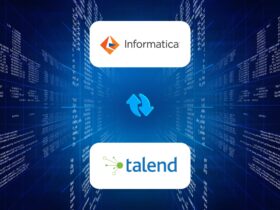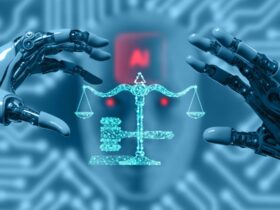Knowledge Graphs, GraphDb and their role in Modern Data Platforms
In order to drive any meaningful insight, there is a huge dependency on how efficiently the data has been utilized. Innumerous data sources, databases and data formats clearly creates a lot of data problems and redundancies. Along with harmonizing the entire organization’s data, data must be blended in a way that makes it useful for further analysis to draw better insights. Knowledge Graphs plays a very prominent role in doing so in the context of machine learning. Knowledge Graphs are paired with complementary AI technologies like machine learning, natural language processing etc.
A Knowledge Graph is a kind of a semantic network with some added restrictions to facilitate algebraic operations on the graph. An interconnected set of information that enables one to meaningfully bridge enterprise data and provide a holistic view of the organization through relationships. A knowledge graph is used as a means of storing and using data, that allows both machines and humans to tap into the connections in their datasets. Information is stored in a graphical format and can be used to generate a graphical representation of the relationships between its data points. Knowledge graphs can act as a database as the data can be explored via structured queries. It can also act as a graph as it can be analyzed as a network data structure. Lastly, it can act as a knowledge base as it bears the formal semantics which can be used to interpret the data and infer new facts.
Knowledge Graph provides a representation framework that captures a wide range of issues which includes the representation of plans, actions, time, individuals’ beliefs and intentions. Knowledge Graph is a variant of semantic network with added constraints like scope, structure and characteristics.
Knowledge Graphs are deployed in search engines like Bing search, LinkedIn data etc. It is also used to provide a relationship within users and the products that they search on websites like eBay. Google search engine also embeds the same logic. Facebook uses Knowledge Graphs to draw connections between people, events, news and related searches. Netflix deploys Knowledge Graphs in its recommendation system in determining the next watch for the user. Supply chain management systems is benefitted in tracking inventories and thus reducing time and making the process cost-effective.
Graph Database
Graph database is a pictorial representation of a database which is used to model the data in a graphical form. The graphical form allows you to navigate and traverse across the entire database along specific edge types and thus creates a structured relationship. Graph databases have come to limelight because of its capabilities in use cases like fraud detection, recommendation engines and social networking.
Data entities are stored in nodes in a graph database and edges are used to store relationships between entities. A node can have any number and kind of relationships. An edge acts as a connecting link between two nodes. It always has a start node, end node, type and direction. It is used to represent a parent-child relationship, actions, ownerships etc.
There are a lot of Graph Databases out of which Neo4j is very popular. Others include Oracle NoSQL Database, OrientDB, HypherGraphDB, GraphBase, InfiniteGraph, AllegroGraph and many others.
Graph Databases differ from RDBMS in a lot of ways. The data in a Graph Database is stored in graphs and not in tables. It contains nodes instead of rows. It consists of properties and their values instead of columns and data. The nodes are connected to define relationships. Instead of a database join, graph databases are traversed. The graph databases are best used in cases where one would want to describe how a person got from point A to point B.
Like SQL, Neo4j uses a query language named CQL which stands for Cypher Query Language. It is a declarative pattern-matching language. The syntax of CQL is very similar to SQL, which is a very easy and readable language.
Neo4j Graph Algorithms are an open procedure library with high-performance algorithms that have been optimized for faster results and incudes features like graph projection, which places a logical sub-graph into algorithms.
Graph databases prove to be the best way to connect master data as it is flexible in connecting data across existing MDM systems or use the graph data store itself as an MDM system. Centralizing the data across MDM systems, finding hidden relationships, generating quick insights and delivering results in real-time are the key reasons why Graph Databases are so useful in managing data.
#RandomTrees #GraphDB #KnowledgeGraph








